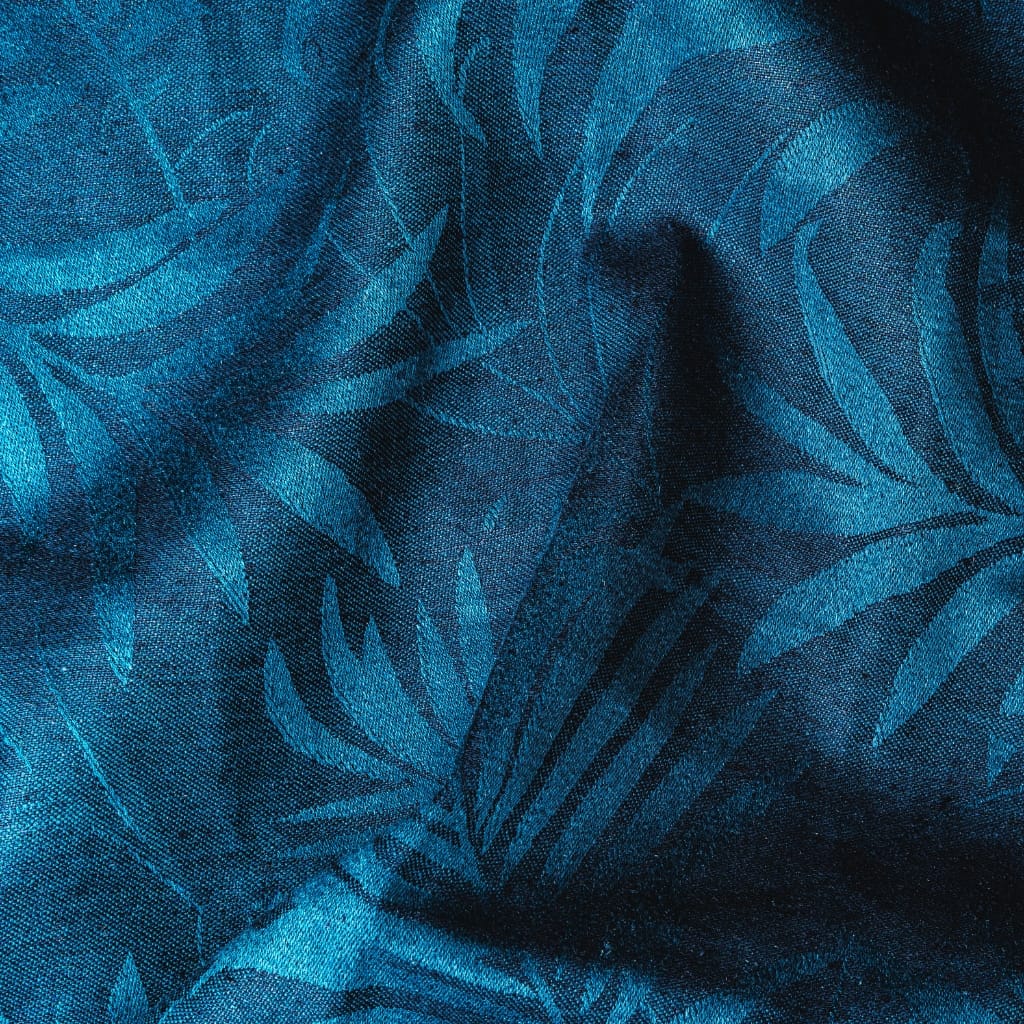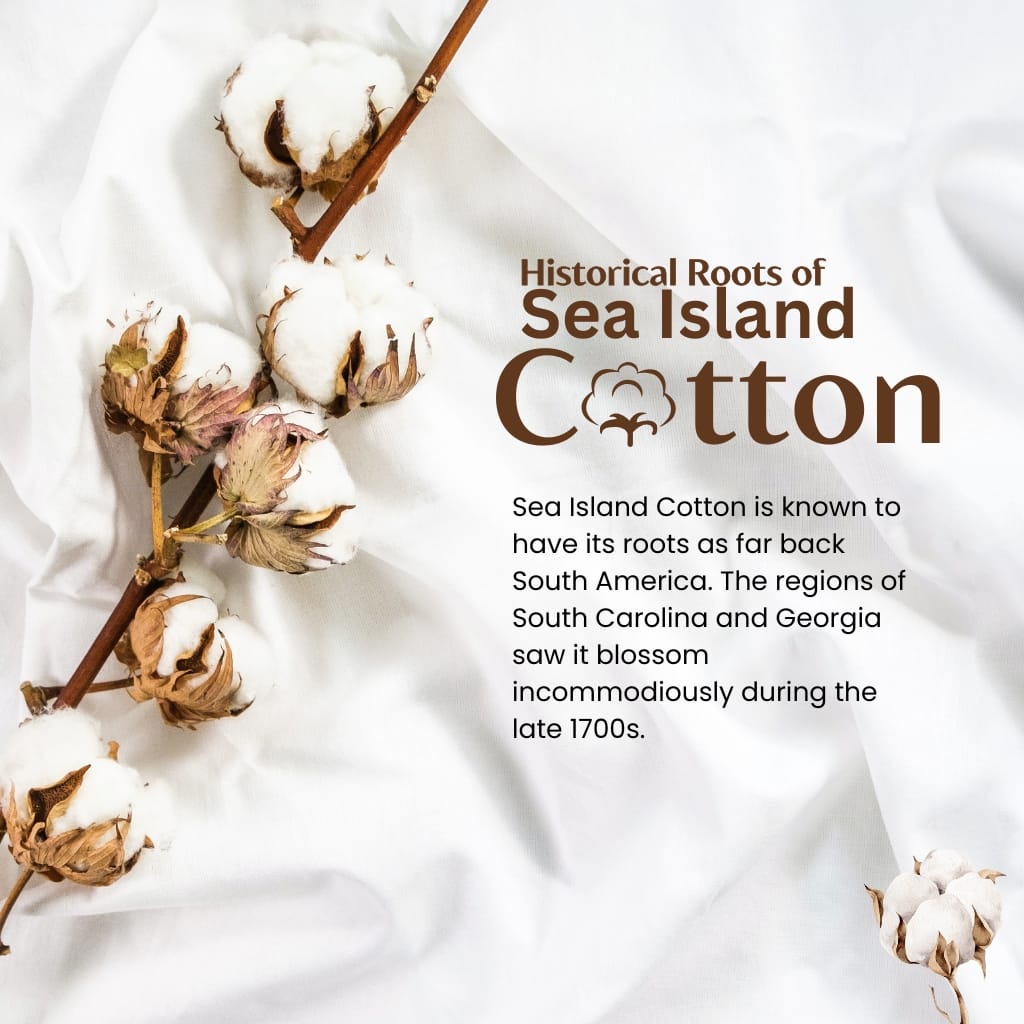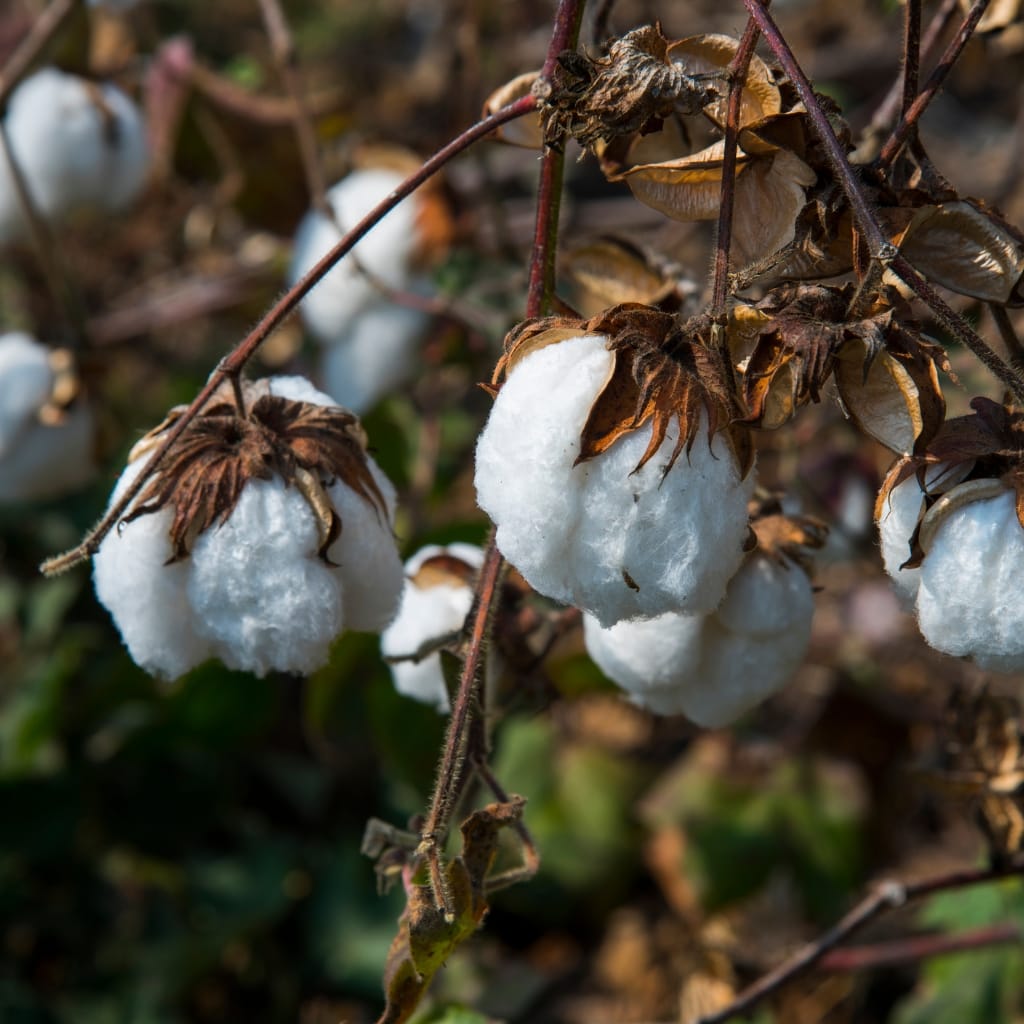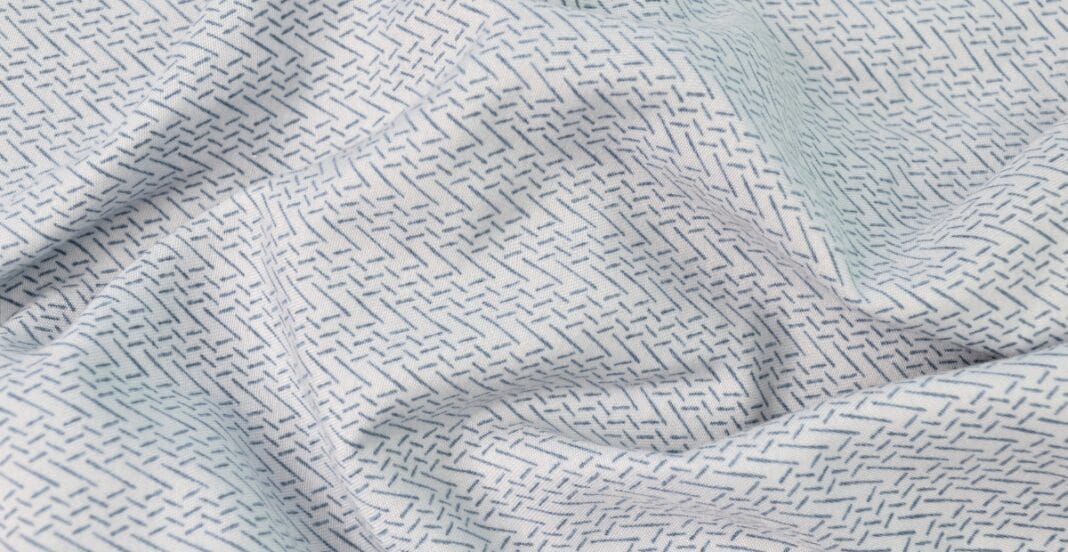People claim Sea Island Cotton is the most sought-after cotton, but why might it be regarded as such? Sea Island Cotton is one in a million, and it is known for being silky, extra thick, and feeling heavenly, making it the “king of all cottons” as people say. Sea Island Cotton is incredibly precious, which is the reason not a lot of people actually get to interact with it due to excess costs.
Only certain areas with a tropical climate can grow this cotton. Which means, it has constraints to use a certain kind of region. With every cotton fiber growing, they end up replacing the most basic version of fabric by being smoother, stronger, and even more durable.
Sea Island Cotton is not something people just pull out of their pockets anytime they want; it grows from Gossypium barbadense and does require some extra attention to make it grow under those hoops.
Why do you think it’s so costly, right? Yeah, those were my first thoughts too, and I’m sure there are others waiting for the explanation along with me.
Table of contents
- Understanding What Is Sea Island Cotton Fabric
- The Historical Roots of Sea Island Cotton
- How Sea Island Cotton Is Grown
- Where Is Sea Island Cotton Produced Today?
- Unique Qualities That Make Sea Island Cotton Special
- What makes Sea Island Cotton feel island luxury
- Advantages of Sea Island Cotton
- What Makes Sea Island Cotton So Scarce?
- Excessive Market Demand For Underproduced Materials
- Why is Sea Island Cotton So Expensive?
- Who Buys Sea Island Cotton?
- Sea Island Cotton Fabric in High-End Fashion
- Recent Applications of Sea Island Cotton
- How To Maintain Sea Island Cotton Fabrics
- Is Sea Island Cotton Sustainable?
- How To Tell Genuine Sea Island Cotton From Counterfeits
- Look Out For These Labels To Avoid Counterfeits
- Designer Collections Sea Island Cotton
- Health Benefits of Sea Island Cotton Clothing
- Sea Island Cotton and Why People With Sensitive Skin Love It
- The Important Industry of Sea Island Cotton
- Why Sea Island Cotton is Difficult to Grow
- Certifications To Ensure Authenticity
- Why Is A Shirt Priced At $300?
- Sea Island Cotton Culture and History
- Technological Innovations with Cotton’s Gene
- Best Practices for Storing Sea Island Cotton
- Managing Sea Island Cotton
- Assessing The Cost of Sea Island Cotton
- Conclusion
- FAQs
Understanding What Is Sea Island Cotton Fabric
A unique strand of cotton gives you Sea Island Cotton. That cotton is approximately 2x greater than basic cotton and in comparison to standard cotton, it’s way more flexible, longer, and finer making it more suitable for threads.
As opposed to traditional cotton, Sea Island Cotton undergoes a journey’s careful cultivation, requiring handpicking to maintain its standard. No shortcuts. From seed to stitch, every step in the process is time intensive and requires meticulous human effort.
Because of this, only small amounts are grown each year. Even big brands struggle to source it in large quantities.

The Historical Roots of Sea Island Cotton
Sea Island Cotton is known to have its roots as far back South America. The regions of South Carolina and Georgia saw it blossom incommodiously during the late 1700s. British settlers are noted to have introduced this variety of cotton to America.
Today, it’s renowned as the prime selection for bespoke shirts and handkerchiefs given its previous popularity among the British aristocracy and luxury houses in London.
Its trajectory has not been smooth sailing. The cotton almost became extinct after the civil war owing to the painstaking efforts put forth to grow and harvest it. With the recently adopted cultivation methods limited to select areas, it’s slowly coming back to life.

How Sea Island Cotton Is Grown
The growing conditions of Sea Island Cotton is definitely a handful. It requires a more hot, humid, and rainfall abundant climate coupled with exceptional soil and a whole lot of empty space. The lack of water in the area may prove to be troubling for the crop’s newly budding necks, hence having a patient and skillful farmer is a necessity.
Modern Sea Island Cotton cannot tolerate rough weather or swift harvesting techniques like other cotton varieties. It’s touchy. Handpicking each cotton boll is necessary to avoid ruining the delicate, extra-long fibers. After the cotton has been harvested, the seeds are removed with minimal ginning to protect the fibers.
Because of the delicate nature of the fibers, its hand-done processes are nearly artistic. Farmers use methods that have been handed down through generations.

Where Is Sea Island Cotton Produced Today?
Southeastern United States is the historical production site of this cotton type, but Jamaica, Barbados and Antigua primarily grow it today. Some of it is still grown in the Carolinas.
This plant’s growth is ideal when near the sea because the combination of the salty air, fertile soil, and prolonged sunshine are perfect. These harsh requirements is what makes it so difficult to produce it in more areas.
This is the reason its supply is scarce.
Unique Qualities That Make Sea Island Cotton Special
Sea Island Cotton speaks for itself:
- Length: The longest of its kind can go beyond 1.5 inches.
- Strength: Incredibly wearable and tough.
- Softness: Has a silk like surface or cashmere.
- Sheen: Naturally elegant glow enhances the fabric, showing off its beauty.
This type of cotton does not pill. It doesn’t crease as easily and is more durable than ordinary cotton, even with regular washing.
But what is astounding is how thus softness is retained even after frequent washing.
Comparison of Sea Island and Egyptian Cotton
Sea Island Cotton is most commonly confused with Egyptian Cotton. Both types are regarded as premium long-staple varieties, but are not the same.
| Feature | Sea Island Cotton | Egyptian Cotton |
|---|---|---|
| Origin | West Indies, U.S. | Egypt |
| Texture | Silkier, smoother | Crisp and strong |
| Price | Higher | Lower (generally) |
| Rarity | Very rare | More common |
| Durability | Extreme | High |
While Egyptian Cotton is excellent, Sea Island Cotton stands a level above.
What makes Sea Island Cotton feel island luxury
Thanks to long silky fibers, Sea Island Cotton threads are spun smoother and stronger than regular cotton.
The final product of such a weave is a fabric that silks the body and glides over the skin like butter.
Even some retailers such as Turnbull & Asser, Sunspel, and Eton have luxury shirts that retail for hundreds, if not thousands, of dollars, featuring them.

Advantages of Sea Island Cotton
Sea Island Cotton withstands a lot and lasts much longer. Unlike regular cotton clothes, they’d be falling apart after everyday usage. It’s fibers hold much stronger.
Less of:
- Pilling
- Division gaps between threads or any tears
- Unraveled fabric
So these luxury shirts made from this specific type of cotton do stand the test of time. That’s an investment.
What Makes Sea Island Cotton So Scarce?
The case of absence provides a more simpler explanation. Producing only a few thousand pounds annually is far less than what regular cotton accomplishes, at millions of pounds each day.
Doesn’t help that:
- Requirements for a specific region are too rigid.
- Farming is not a simple process.
- Figures per acre are exceptionally minimal.
- Labor in the field is largely manual.
So each shirt, towel, or even bedsheets made from Sea Island cotton are astounding.
Excessive Market Demand For Underproduced Materials
Low supply alongside heavy market demand gets this ultimate outcome of exceedingly high chances, and that’s an example of What’s From Hawaii.Floridians are the only Americans who won’t pay over a thousand dollars for tailors that want Sea Island, form fitting trousers. Sea Island is best known for producing high-end cotton, and by high-end, I mean Louis Vuitton high-end. Everyone from tech companies to luxury brands build clothes using the limited stock of cotton, because the demand is relentless.
Why is Sea Island Cotton So Expensive?
The list explaining the expensive cost of Sea Island Cotton is stated below:
- Unharvested Fertile Fields
- Widespread Fame
- Little, Efficient Picking
- Sustained Amount of Quality Blast Processes
- Gungho, Eager Consumers
- Unparalleled Offers, along with the loyalty mantle customers get with it
To top things off, not many people get classified as “Corsair” due to the scarcity– wearing Sea Island symbolizes not only wealth, but poses you amongst high elite. It’s the same to owning a Rolex, or driving a Rolls Royce.
Who Buys Sea Island Cotton?
Grab your wallets, because it only takes a few deep pockets to dunk to purchase thin high-detailed refined sea-algon coated cotton fabric miles beneath our heads.
- Design Fashion Stores
- Aristocrat Lifetime Cotposers
- Sovereigns
- Multi-Middle Age Bafflers
- Grand Sea-Altar Tribal Cultured
These individuals are able to afford varied types of fabric deeper into the Earth’s crust – miles beneath our heads.
Sea Island Cotton Fabric in High-End Fashion
You want to pick for rolls and glasse just in case you want to surprise a humble upper-middle-class perspective? Go check beauty stores located in the formula one style during winning. Not only will you pick up “highly” refined deep-sea algon and up-of-world-renown, but highly refined sea algon.

Recent Applications of Sea Island Cotton
Besides fashion, Sea Island Cotton is used in:
- Luxurious bed linens
- Premium quality bath towels
- Hand-crafted accessories
- Fine underwear
- Innovative smart textiles
Cotton’s plushness and resilience make it appealing for wear and adornment.
How To Maintain Sea Island Cotton Fabrics
Maintaining this type of cotton requires effort. These guidelines are recommended:
- Wash in cold or lukewarm water
- Clean with a gentle detergent
- Do not use bleach
- Hang dry or set dryer to low heat
- Iron on a low temperature if required
These procedures preserve cotton’s texture, color, softness, and longevity for years.
Is Sea Island Cotton Sustainable?
Yes, to a large extent. Most Sea Island Cotton is grown organically or with minimal pesticides.
It sustains small farms, uses ethical methods, and legally protects from overproduction.
It may not be certified as some organic fibers due to lesser-known certifications, but it provides a low-impact clean textile path.
How To Tell Genuine Sea Island Cotton From Counterfeits
Fake cotton shows up everywhere, and here is how to identify real Sea Island Cotton:
- Check For WISICA Certification
- Check The Origin (Should Be West Indies)
- Touch The Fabric (Soft To The Touch)
- Look At Labels
Brand seals always testify their claims.
Look Out For These Labels To Avoid Counterfeits
Look out for these labels to avoid being ripped off:
- “100% Genuine Sea Island Cotton”
- “WISICA Certified”
- “Grown in the West Indies”
Do not trust any product that is circumspect.
Designer Collections Sea Island Cotton
Sea Island Cotton graced the world’s best wardrobes, from business shirts to ceremonial robes. Designers frequently incorporate them as an embellishing feature telling they appreciate quality and tradition.

Health Benefits of Sea Island Cotton Clothing
Worn against the skin, it has the following effects:
- Hypoallergenic
- Washable, non irritating
- No caustic substances
- Naturally protects against bacteria
That’s the appeal for allergic individuals suffering from eczema.
Sea Island Cotton and Why People With Sensitive Skin Love It
If you have sensitive skin. You will appreciate Sea Island Cotton for how soft it feels. It is free from rashes, locks out moisture, and allow the skin to breathe, giving the body a chance to heal.It can be safely worn by infants and toddlers.
The Important Industry of Sea Island Cotton
Its luxurious image is followed by a niche but powerful industry. The production and supply is controlled by only a few companies.
They maintain price standards, protect authenticity, and ensure quality.
Why Sea Island Cotton is Difficult to Grow
Everything has to go right for this crop:
- There can be no floods.
- There can be no droughts.
- Temperatures need to be warm.
- Soil has to be healthy.
- There should be skilled labor.
The entire year’s harvest can be destroyed by slight glitches in the weather.
Certifications To Ensure Authenticity
Look for these certifications to be sure of your purchase:
- GOTS for organic standards.
- Fair Trade certifications.
- WISICA (West Indian Sea Island Cotton Association).
These symbols prove useful for both consumers and producers.
Why Is A Shirt Priced At $300?
Have you ever seen a $300 T-shirt? If it’s made from Sea Island Cotton, the price is justified.
$300 will allow you to pay for:
- An extremely durable crafted t-shirt
- Rare supply
- Ethical labor
- Hand harvested raw material
- 10x longer fibers
It may be pricey but, it is bound to last you a lifetime.
Sea Island Cotton Culture and History
Not only is Sea Islands Cotton just fabric, it is also a symbol of legacy and luxury.
It’s evolution of textiles throughout history, of nobility tailored into costume, of merit refined into object.
Technological Innovations with Cotton’s Gene
Oceanic scientists have set their sights on preserving the genome of Sea Island Cotton. What are they after?
Raise the yield of farming without degrading the quality.
Deal with crop diseases.
Simplify farming work.
That does make the future a lot more promising, if still selective.
Best Practices for Storing Sea Island Cotton
If you wish for your garments to retain their like-new appearance:
Store in a cool dry location.
Do not expose to sunlight.
Avoid tight folding.
This goes a long way in preventing yellowing, creasing and weakening fibers.
Managing Sea Island Cotton
As it’s advised with all cotton, hand washing is always the best method. If machines are to be used:
Use a mesh laundry bag.
Set machine to gentle cycle.
Avoid overloading the washer.
Dry flat or on padded hangers.
Like silk, not cotton.
Assessing The Cost of Sea Island Cotton
Fully endorsed without reservation, that’s for sure.
The combination of rarity, being durable, luxurious, skin friendly all speaks for themselves. Few fabrics offer comfort and unmatched quality, but this is one of them.
Sure, it’s pricey. But that’s the benefit.
Conclusion
Sea Island Cotton blends nature, luxury, and heritage into something you can wear or sleep on. It isn’t just a textile.
So remember, not all cotton is created equal, the next time you wonder why a shirt or a bed sheet set is priced so high.
FAQs
Yes, it’s softer, longer, and rarer. Though Pima is also premium, Sea Island Cotton ranks higher.
Yes, but use a gentle cycle and avoid high heat. Handwashing is safer.
Very little—if washed correctly. Avoid hot water and high heat drying.


